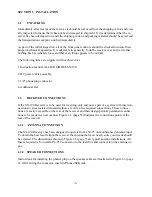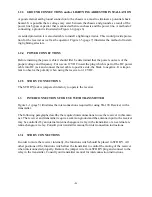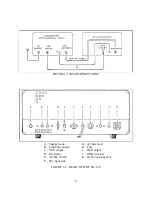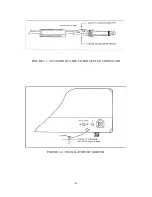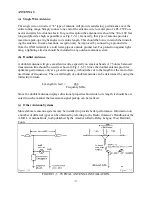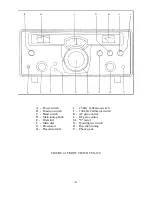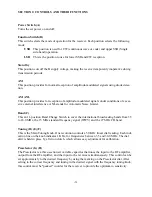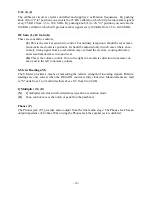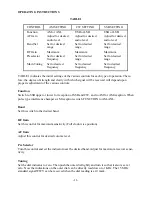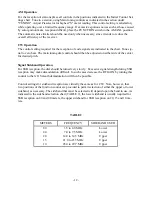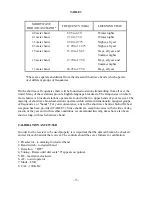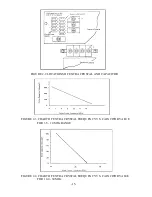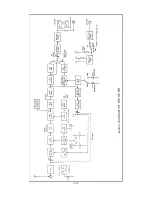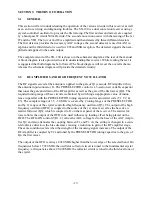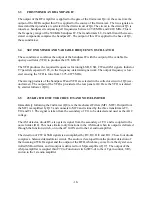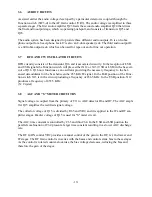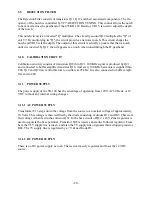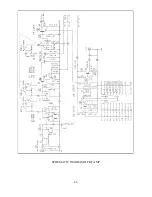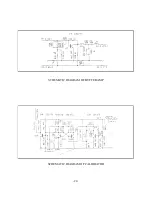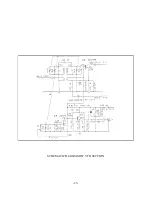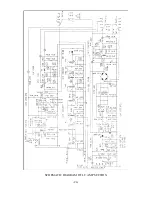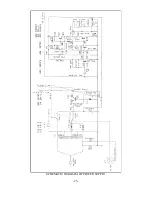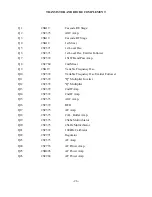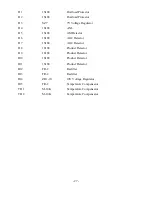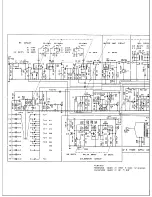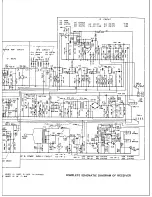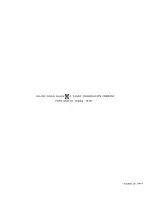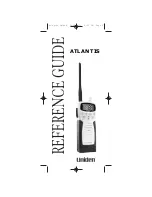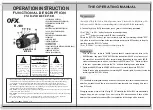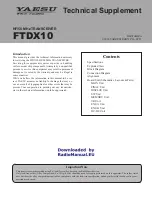
SECTION 3: THEORY OF OPERATION
3.1 GENERAL
This section will aid in understanding the operation of the various circuits in this receiver as well
as an aid in servicing and diagnosing troubles. The SX-190 is a dual conversion receiver using a
crystal-controlled oscillator to provide the first mixing. The first and second mixers are coupled
by a band-pass IF circuit 500 kHz wide. The second conversion occurs with the mixing of the 1st
IF and the VFO. The low or 2nd IF is amplified and then detected by three different detectors
The first detector provides the necessary AGC voltages, the second detector is used for AM re-
ception and the third detector is used for CW and SSB reception. The detected signal is then am-
plified and applied to the audio output.
The complete circuit of the SX- 190 is shown in the schematic diagram at the rear of the manual.
A block diagram is also provided to aid in understanding this receiver. While reading the text it
is suggested that both diagrams be followed. The block diagram will reveal the overall scheme,
whereas the schematic diagram will provide the detailed circuitry.
3.2
RF AMPLIFIERS AND HIGH FREQUENCY OSCILLATOR
The RF signal received at the antenna is applied to the gate of Q1 (cascode RF Amplifier) thru
the antenna input connector J1. The PRESELECTOR control is a 3-section air variable capacitor
that tunes the gate and drain of the RF amplifier as well as the gate of the first mixer (Q4). The
required tuning range of these circuits is obtained by switching an appropriate value of induc-
tance in parallel with the PRESELECTOR tuning capacitor and its associated coils (T1, T2, &
T3). The complete range of 3.5 - 30 MHz is covered by 2 tuning ranges of the PRESELECTOR
and by 11 ranges of the crystal controlled high frequency oscillator (Q5). The output of the high
frequency oscillator (HFO) is coupled to the source of the 1st mixer as well as the base of an
emitter follower (Q6), which is coupled to J2 on the rear panel of the receiver. The emitter fol-
lower allows the output of the HFO to be used without any loading effect being placed on the
HFO. The RF GAIN control (VR1, 2) varies the AGC voltage fed to the base of the AGC Ampli-
fier Q2, and also attenuates the coupling between T1 and T2. As the setting is changed in a coun-
terclockwise direction, the bias decreases causing a reduction in gain of the RF amplifier stage.
The same condition exists when the strength of the incoming signal increases. The output of the
RF Amplifier is coupled by T2 and tuned by the PRESELECTOR tuning capacitor to the gate of
Q4, the first mixer.
The output of the HFO is always 2.920 MHz higher than the lower edge of the selected band. On
frequencies below 17.920 MHz the oscillator collector circuit is tuned to the fundamental crystal
frequency; at frequencies above 20.420 MHz the collector circuit is tuned to the third overtone of
the crystal.
-17-
Summary of Contents for SX-190
Page 1: ......
Page 7: ...FIGURE 1 3 ATTACHING CABLE TO PHONE PLUG CONNECTOR FIGURE 1 4 INSTALLATION OF GROUND 6 ...
Page 17: ... 16 ...
Page 22: ...SCHEMATIC DIAGRAM OF RF AMP 21 ...
Page 23: ...SCHEMATIC DIAGRAM OF BUFFER AMP SCHEMATIC DIAGRAM OF CALIBRATOR 22 ...
Page 24: ...SCHEMATIC DIAGRAM OF VFO SECTION 23 ...
Page 25: ...SCHEMATIC DIAGRAM OF I F AMP SECTION 24 ...
Page 26: ...SCHEMATIC DIAGRAM OF POWER SUPPLY 25 ...
Page 29: ......
Page 30: ......
Page 31: ......

